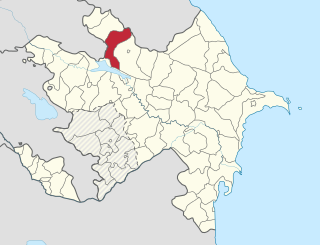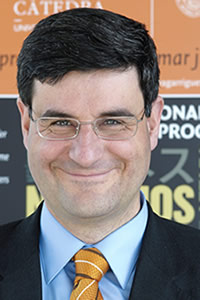
Quintus Horatius Flaccus, known in the English-speaking world as Horace, was the leading Roman lyric poet during the time of Augustus. The rhetorician Quintilian regarded his Odes as just about the only Latin lyrics worth reading: "He can be lofty sometimes, yet he is also full of charm and grace, versatile in his figures, and felicitously daring in his choice of words."

Qakh District, also Kakhi or sometimes Gakh, is a raion (district) in the north of Azerbaijan, on the border with Georgia (Kakheti).

A distinctive unit insignia (DUI) is a metallic heraldic badge or device worn by soldiers in the United States Army. The DUI design is derived from the coat of arms authorized for a unit. DUIs may also be called "distinctive insignia" (DI) or, imprecisely, a "crest" or a "unit crest" by soldiers or collectors. The U.S. Army Institute of Heraldry is responsible for the design, development and authorization of all DUIs.
The Deciates (Δεκιῆται) were a Ligurian tribe in the first few centuries BC. They lived in the Antibes area of what is now France, west of the river Var. The border with the Ligurian Oxybii (Ὀξύβιοι) being to the west of Antipolis and east of Forum Julii. The Deciates had a town in the area, oppidum Deciatum but this was not Antibes itself :
The barbiton, or barbitos, is an ancient stringed instrument known from Greek and Roman classics related to the lyre. The barbat or barbud, also sometimes called barbiton, is an unrelated lute-like instrument derived from Persia.
Constantin Fasolt, is an influential historian and was the Karl J. Weintraub Emeritus Professor of Medieval and Early Modern European History at the University of Chicago, who specializes in the development and significance of historical thought.
Judah ben David Hayyuj was a Moroccan Jewish linguist. He is regarded as the father of scientific grammar of Hebrew language. He was born in Fez, Morocco, about 945. At an early age he went to Cordoba, where he seems to have remained till his death, which occurred about 1000 CE.
Coats of arms of US Army units are heraldic emblems associated with units in the US Army. Under Army Regulation 840-10, each regiment and separate table of organization and equipment (TOE) battalion of the US Army is authorized a coat of arms to be displayed on the organization's flag, called the "colors." This coat of arms usually forms the basis for the unit's distinctive unit insignia (DUI), the emblem worn by all members of the unit on their service uniforms.

Rafael Domingo Oslé is a Spanish jurist, legal theorist and professor of law who is specialized in ancient Roman law, Comparative law, law and religion, and Global law. Domingo holds the positions of Spruill Family Research Professor of Law and Francisco de Vitoria Senior Fellow at Emory University in Atlanta, GA; and Professor of Law and ICS Research Professor at the University of Navarra in Pamplona.
The Council of Bourges was a Catholic council convened in November 1225 in Bourges, France; it was the second largest church assembly held in the West up to that time, exceeded in the numbers of prelates that attended only by the Fourth Lateran Council. Summoned by the cardinal-legate Romanus Bonaventura, it was attended by 112 archbishops and bishops, more than 500 abbots, many deans and archdeacons, and over 100 representatives of cathedral chapters.

Collaborative e-democracy or super-democracy is a democratic conception that combines key features of direct democracy, representative democracy, and e-democracy. The concept was first published at two international academic conferences in 2009.

This article presents a list of notable historical references to the name Palestine as a place name in the Middle East throughout the history of the region, including its cognates such as "Filastin" and "Palaestina".

The Paenitentiale Theodori is an early medieval penitential handbook based on the judgements of Archbishop Theodore of Canterbury. It exists in multiple versions, the fullest and historically most important of which is the U or Discipulus Umbrensium version, composed (probably) in Northumbria within approximately a decade or two after Theodore's death. Other early though far less popular versions are those known today as the Capitula Dacheriana, the Canones Gregorii, the Canones Basilienses, and the Canones Cottoniani, all of which were compiled before the Paenitentiale Umbrense probably in either Ireland and/or England during or shortly after Theodore's lifetime.









